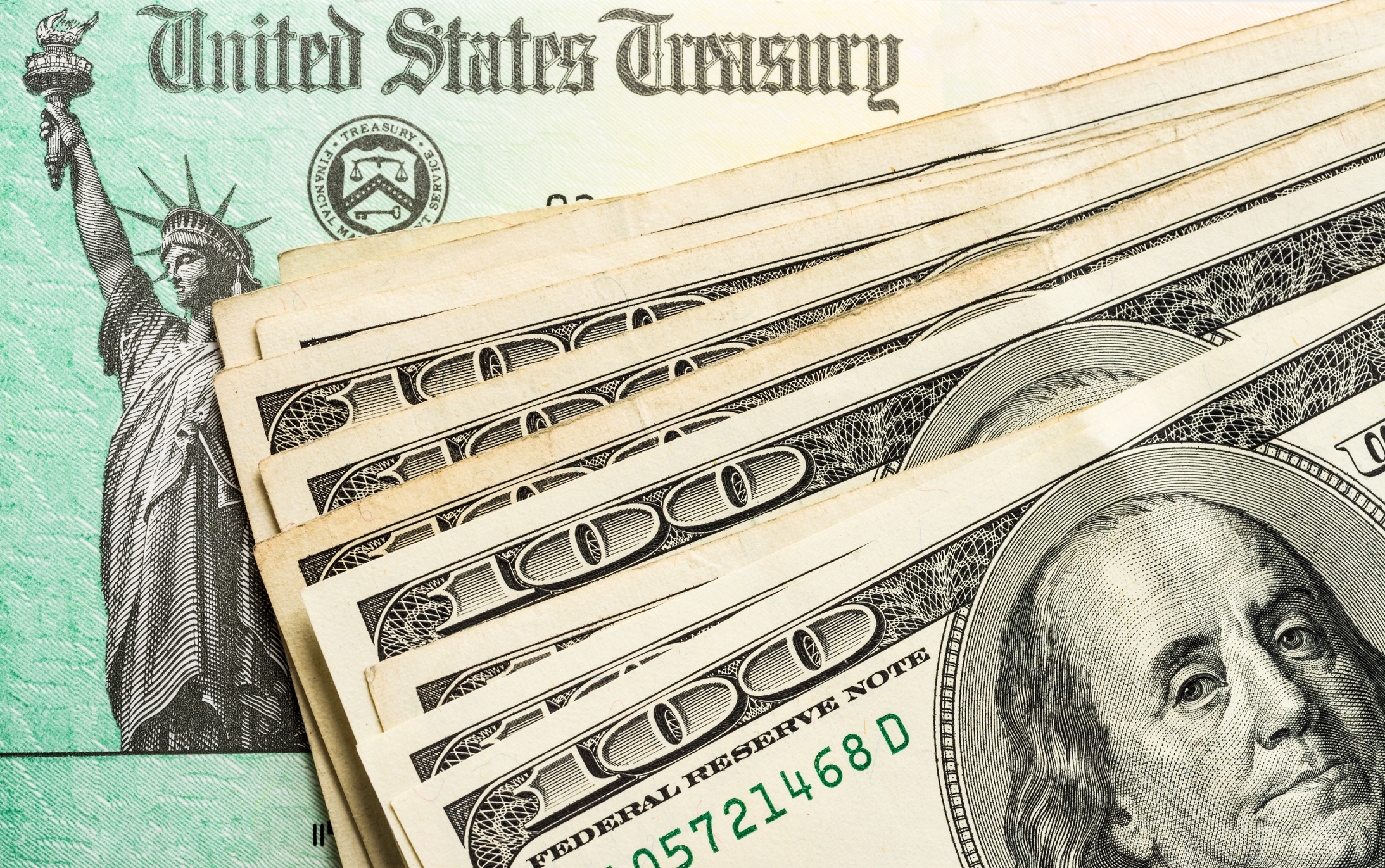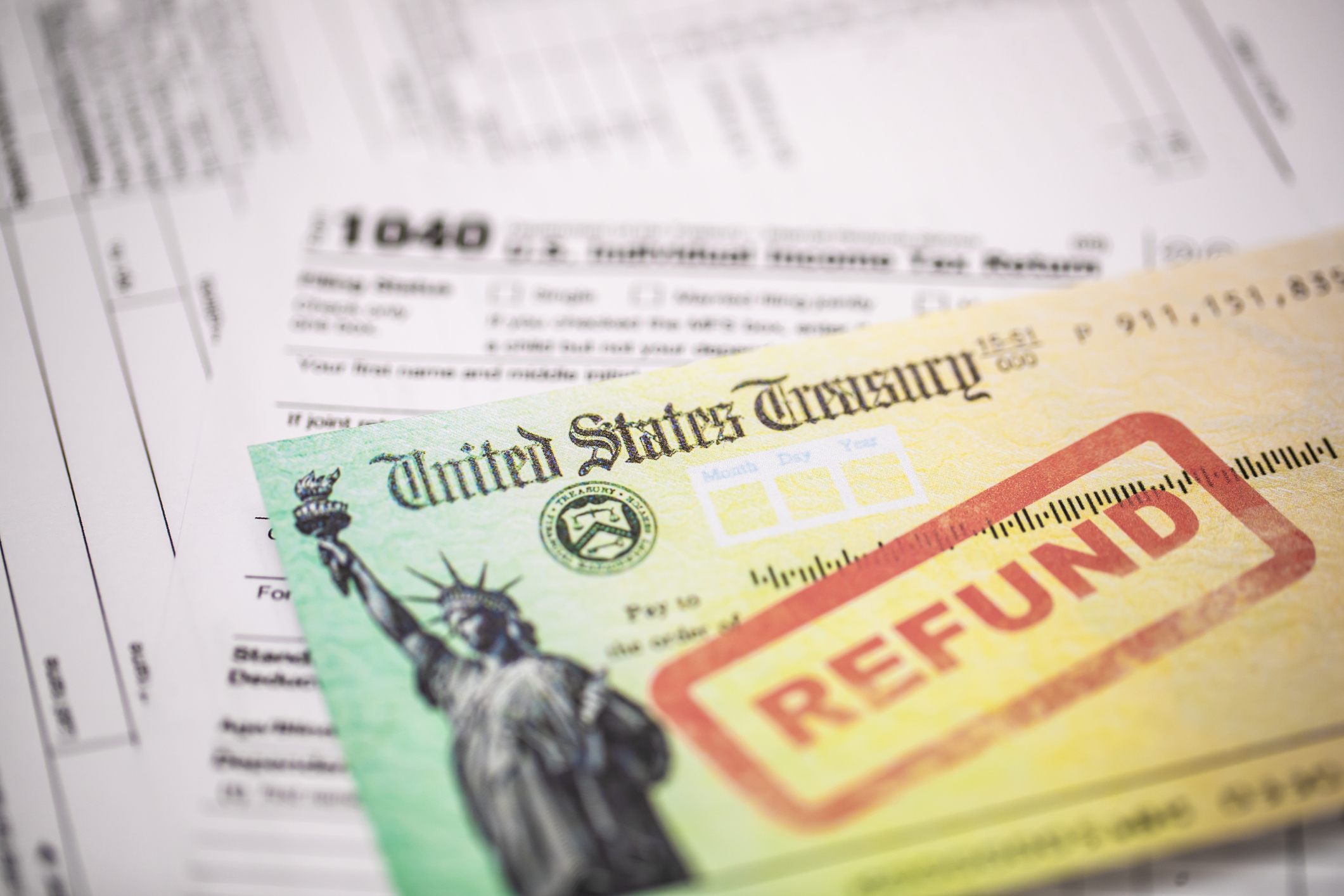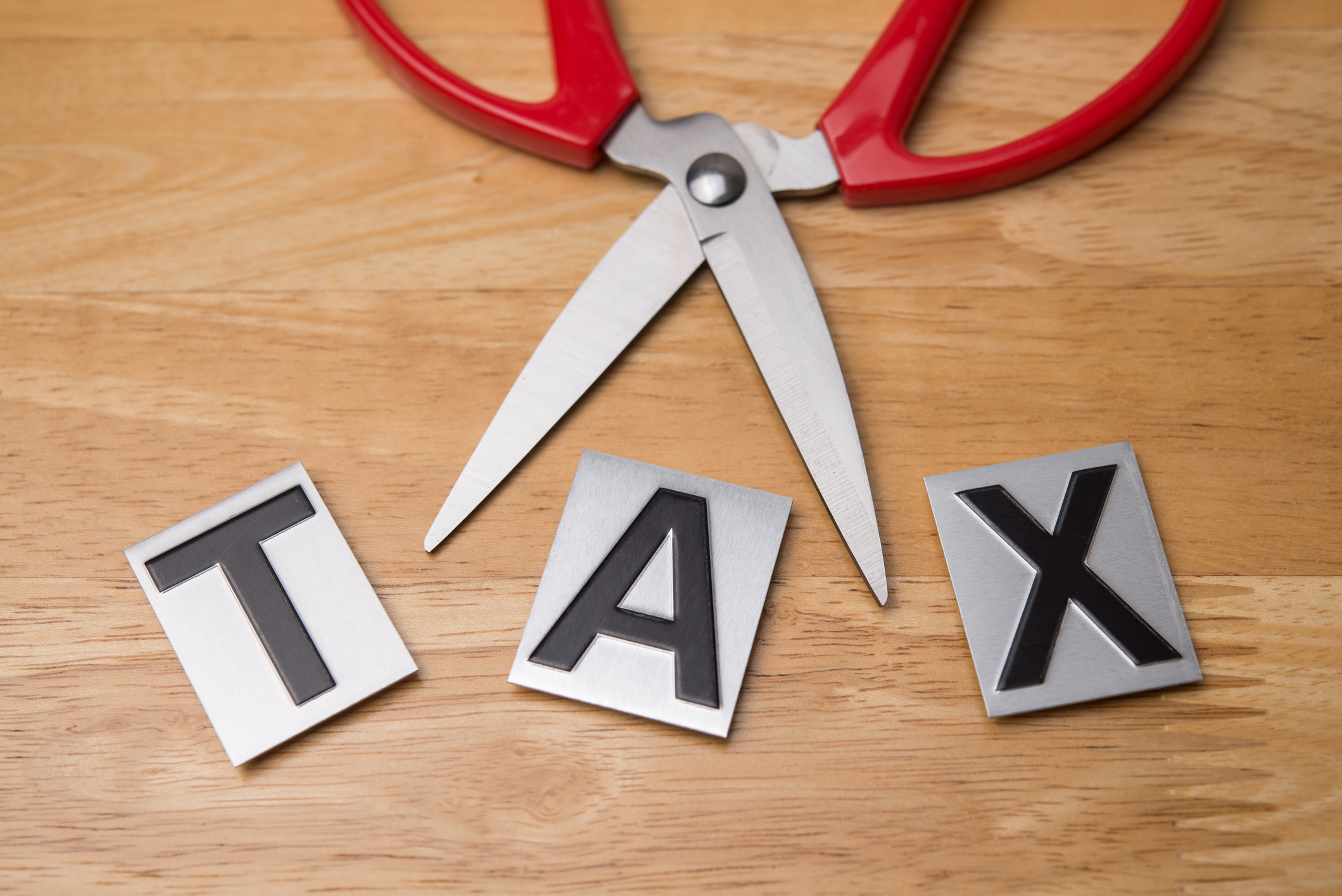Five Ways Trump’s 2025 Tax Bill Could Boost Your Tax Refund (or Shrink It)
The tax code is changing again, and if you’re filing for 2025, Trump’s ‘big beautiful’ bill could mean a bigger refund, a smaller one or something in between next year. Here are five ways the new law could impact your bottom line.


You’ve heard about the recent “Trump megabill,” but how will it affect your tax refund? While some provisions could increase your tax liability next year, others might give you a serious payday.
For instance, the IRS reports that nine out of 10 taxpayers don’t itemize deductions. If that’s you, a permanently higher standard deduction could give you more money back.
However, new provisions, such as some involving the federal child tax credit, might squeeze your bottom line if you’re a noncitizen, potentially costing you more in taxes.
From just $107.88 $24.99 for Kiplinger Personal Finance
Become a smarter, better informed investor. Subscribe from just $107.88 $24.99, plus get up to 4 Special Issues

Sign up for Kiplinger’s Free Newsletters
Profit and prosper with the best of expert advice on investing, taxes, retirement, personal finance and more - straight to your e-mail.
Profit and prosper with the best of expert advice - straight to your e-mail.
Several provisions in the new tax law are temporary. Those new tax benefits could go away as early as 2029.
Here are five tax policies in the so-called “One Big Beautiful Bill” (OBBB) that might increase or decrease your bottom line come tax season.
Related: Claiming the Standard Deduction? Here Are Ten Tax Breaks For Middle-Class Families in 2025
Standard Deduction
1. The standard deduction affects tax refunds
While the IRS already increased the standard deduction last fall due to inflation, the OBBB further raises it. For 2025, the standard deduction amounts are as follows:
- Married couples filing jointly receive $31,500.
- Single filers receive $15,750.
- Heads of household receive $23,625.
If you’re someone who claims the standard deduction (rather than itemizing), you could see a bump in next year’s tax refund or a corresponding reduction in your tax liability.
For instance:
- If you’re single, you’ll get $1,150 more in standard deduction dollars on your 2025 federal return compared with last year.
- If you’re married and filing a joint return, you’ll see a $2,300 increase in your standard deduction compared with last year’s return.
Note: The above amounts reflect the IRS's change to the 2025 standard deduction plus the OBBB increases.
If you’re an older adult, you could receive even higher savings on next year’s federal return under the new tax law, because the OBBB added a new bonus standard deduction of $6,000 (in addition to the usual extra standard deduction for older adults).
However, the temporary bonus deduction is dependent on modified adjusted gross income (MAGI), so you could miss out on this benefit.
The limits are $150,000 for married, filing jointly couples and $75,000 for single filers. The phaseout is 6% for every dollar above the income limits.
Here's an example to show how this works.
- A married, filing jointly couple who earns $150,000 and where both adults are 65 and older could receive a full $12,000 bonus deduction on their return.
- Yet, if that same couple were making $160,000 ($10,000 above the limit), the deduction is reduced by $1,200 (6% x $10,000 multiplied by two, since both adults are above 65).
- This would result in a deduction of $10,800 for the couple, rather than the full $12,000 benefit.
It’s also important to note that the OBBB permanently ended the personal and dependency exemption, which was $4,050 per qualifying taxpayer, spouse and child (indexed for inflation).
That change is likely to permanently decrease your tax refund, especially if your household has many people who would’ve qualified for the exemption.
SALT Deduction Cap
2. The ‘SALT refund’: How much is it?
If you itemize your federal return and live in a high-cost area, you could see a reduction in your tax liability. That’s because the state and local tax deduction (SALT) changed under the OBBB.
Most taxpayers claim the standard deduction these days. However, more Americans itemized their deductions before the 2017 Tax Cuts and Jobs Act (TCJA) capped SALT at just $10,000. Before that, the deduction was unlimited.
States with high property taxes and/or state income taxes, such as New York, New Jersey or California, might have suffered the most from the $10,000 cap on the SALT deduction, since they haven’t been able to fully deduct these types of taxes on their federal return since the TCJA was enacted.
But the OBBB temporarily increases the SALT cap to $40,000, meaning you could save more on federal 2025 taxes if you live in a high-cost area.
Let’s look at an oversimplified example to see how that might work:
- A couple with $200,000 in income claims the standard deduction for tax year 2025 and has no other credits, deductions or alternative minimum tax (AMT) liability. Their taxable income is $168,500 ($200,000 gross income minus $31,500 standard deduction).
- If that same couple were to pay $43,000 in state and local taxes that year, they might choose to itemize. This would reduce their taxable income to $160,000 ($200,000 gross income minus the $40,000 SALT cap).
- The net effect is an $8,500 reduction in taxable income on their federal return.
It’s worth mentioning that the SALT cap increase is temporary and will revert to $10,000 in 2030.
Taxpayers with $500,000 or more will have a 30% phaseout for every dollar their income exceeds the limit. The SALT cap reverts completely to $10,000 for incomes of $600,000 and higher.
Are you a high-income taxpayer? If so, here’s a simple example of how the new SALT cap deduction might impact you:
- A single filer makes $505,000 per year in MAGI and wishes to itemize to take the SALT deduction.
- Yet, $505,000 is $5,000 above the income limit, meaning the deduction is reduced by $1,500 ($5,000 times 30%).
- The total SALT deduction for this filer would be $38,500.
Child Tax Credit
3. How much money will I get back for a child tax credit?
The OBBB also changed the federal child tax credit (CTC) for qualifying children 17 and under by increasing the maximum amount from $2,000 to $2,200 (adjusted annually starting in 2026).
If you’ve got qualifying kids, the extra $200 you’re getting from the child tax credit could raise your next tax refund (or at the very least, lower your tax bill).
- For example, a couple with $350,000 and two children under 17 would see $4,400 in child tax credit savings.
- That’s $400 higher than last year’s federal return.
- Families with four children could also see an increase in child tax credit breaks from $8,000 to $8,800.
However, the CTC is reduced by $50 for every $1,000 (or fraction thereof) that your MAGI is above specific income thresholds.
These income caps remain at $200,000 or more (for single filers) and $400,000 or more (married filing jointly couples). If you make above those amounts, you’ll likely see less benefit from the new child tax credit in your tax refund:
- A single filer with one child age 17 and under and an income of $200,000 would see $2,200 in child tax credit savings.
- But if that same filer made $205,000 instead, their maximum child tax credit would be reduced by $250 ($5,000 is five times above the income limit, so $50 times 5 is $250).
- The total tax credit would then be $1,950 ($2,200 minus $250).
- Before the OBBB, the single filer with $205,000 would’ve seen a total tax credit of $1,750 ($2,000 minus $250).
- The net gain under the new law is $200.

While some 2025 tax refunds could be bigger due to the so-called "Trump megabill," others might be smaller or see no change at all.
But the new child tax credit doesn’t benefit everyone. Households with noncitizen parents might see an increase in their 2025 tax bill. That’s because the child tax credit now requires parents to have a Social Security Number (SSN).
As Kiplinger reported, this means that nearly 2.7 million children in the U.S. who previously qualified will no longer be eligible for the credit due to their parents’ immigration status, leading to a potential $5.94 million loss in tax savings ($2,200 multiplied by 2.7 million).
Tax on Tips and Overtime
4. Will I get a bigger tax refund if I work overtime or for tips?
Tax on tips also changed under the new Trump tax bill, though perhaps in an unexpected way. Prior law dictated that cash tips (including credit and debit card charges) were taxed like ordinary income.
Now, under the OBBB, there’s a temporary deduction for tips up to $25,000, subject to an income phase-out (more on that below).
Are you a service worker? Here’s a simple example of what the no tax on tips law might look like for you:
- A server at a popular restaurant earns $20,000 in annual tip income.
- On last year’s tax return, the server claimed the standard deduction and had no other income or tax breaks. The total taxable income on their federal return was $5,400 ($20,000 minus the $14,600 standard deduction for single filers).
- In 2025, that same server could have zero federal income tax if they claim the tip deduction ($20,000 minus $15,750 standard deduction, minus the $25,000 maximum tip deduction).
It’s important to note that the IRS hasn’t yet squared away the definition of what a “tipped employee” is, yet. It’s unclear which workers will be affected.
Once more, workers who don’t ordinarily receive tips, such as retail sales clerks, cooks or childcare workers, will most likely not gain a benefit from this law. Meanwhile, tipped workers earning more than $150,000 (or $300,000 for joint filers) will see a phaseout of the tip tax deduction.
For more information, check out Kiplinger’s report New 'No Tax on Tips' Bill Approved for 2025: What to Know Now.
Similarly, overtime rules changed with the new tax bill. The OBBB created a no tax on overtime deduction worth up to $12,500 for tax years 2025 through 2028. The deduction has the same income phaseouts as “no tax on tips” at $150,000 for single filers and $300,000 for married, filing jointly couples.
Are you an overtime worker? The “no tax on overtime” could increase your tax refund or lower your federal tax liability, regardless of whether you itemize or claim the standard deduction.
Note: Non-cash tips (like artwork) are still fully taxable as ordinary income and not eligible for a tip income deduction. Payroll taxes and state/local income taxes also still apply.
Business tax provisions
5. Key small business taxes: QBI, bonus depreciation and more
Several key tax provisions affecting small businesses are included in the OBBB. Here are a few:
- Permanently extending the “Qualified Business Income” (QBI) tax rate. QBI is the income your business earns after deducting qualified expenses (such as rent, utilities, business loan interest, etc.). The OBBB made the 20% deduction rate permanent.
- Making permanent “bonus depreciation.” Qualified property that you buy and place into service after January 19, 2025, is now eligible for immediate 100% expensing. Ordinarily, you’d have to wait to expense the asset above five, 10, 15, even 20 years.
- Providing more opportunities to use “Section 179” expensing. Similar to bonus depreciation, Section 179 allows businesses to deduct 100% of qualified equipment and software. But there’s a deduction limit, which makes it more beneficial for small businesses vs large corporations. OBBB increased the maximum deduction amount and phase-out threshold for expensing.
All three of these provisions could help small businesses save on their taxes in 2025.
For instance, QBI only applies to businesses set up as a “pass-through entity,” like plumbers, accounting firms, and graphic designers (certain limits might apply). Maintaining the rate allows business owners to deduct more income (compared with before the TCJA), and lower income taxes paid.
Another helpful provision in the OBBB affects Section 179 expensing.
- This special type of expense is generally for small to midsize businesses due to its dollar limits.
- The OBBB increased these limits, allowing businesses to now deduct up to $2.5 million in property (up from $1.25 million).
- Likewise, the phase out is $4 million (up from $3.13 million).
Are you a small business owner? Let’s look at a very simplified example to understand how Section 179 and bonus depreciation can work together to maximize your tax savings:
- Pineapple Plane Company purchased one new plane for $2 million in 2025. Under Section 179, the company deducts the entire cost this year, resulting in a $2 million reduction in taxable income.
- Now, let’s say Pineapple instead purchased a megaplane for $3 million. Under Section 179, the company can only deduct $2.5 million per year. That leaves $500,000 undeducted.
- But bonus depreciation allows Pineapple to deduct the remaining $500,000 if the company started using the plane after January 19, 2025.
Note: The Section 179 deduction cannot exceed the business’s taxable income. The example also assumes the planes have a depreciable life of 20 years or less.
What to watch for next tax season
While we covered five major ways your tax refund might be affected this year, other provisions in the OBBB and IRS changes could affect your taxes. Here are a few more to watch:
- New temporary car loan interest deduction, allowing you to deduct up to $10,000 in interest paid on new vehicles, subject to income phase-outs.
- New Trump Accounts, which might help your child save for future educational, homeownership, and entrepreneurial costs.
- After September 30, the IRS will stop sending paper checks. If you're someone who likes to receive your tax refund via the mail, you'll need to opt for a digital payment instead next filing season.
As always, it’s important to keep an eye on the ever-changing tax landscape, both on Capitol Hill and in your state and local governments. Consult with a tax professional on your specific financial situation.
Several provisions listed above are expected to receive additional clarification from the IRS by October 2025. Stay tuned for more updates.
More OBBB Changes
- New Cap on Gambling Loss Deductions Begins Soon
- The 2025 EV Tax Credit: Yes, It's Ending
- New Medicaid Cuts: Is Your Local Hospital Closing?
- Student Loan Forgiveness: How Taxes and Repayment Could Change
Profit and prosper with the best of Kiplinger's advice on investing, taxes, retirement, personal finance and much more. Delivered daily. Enter your email in the box and click Sign Me Up.

Kate is a CPA with experience in audit and technology. As a Tax Writer at Kiplinger, Kate believes that tax and finance news should meet people where they are today, across cultural, educational, and disciplinary backgrounds.
-
 Forget FIRE: Why ‘FILE’ Is the Smarter Move for Child-Free DINKs
Forget FIRE: Why ‘FILE’ Is the Smarter Move for Child-Free DINKsHow shifting from "Retiring Early" to "Living Early" allows child-free adults to enjoy their wealth while they’re still young enough to use it.
-
 7 Tax Blunders to Avoid in Your First Year of Retirement
7 Tax Blunders to Avoid in Your First Year of RetirementA business-as-usual approach to taxes in the first year of retirement can lead to silly trip-ups that erode your nest egg. Here are seven common goofs to avoid.
-
 How to Plan for Social Security in 2026's Changing Landscape
How to Plan for Social Security in 2026's Changing LandscapeNot understanding how the upcoming changes in 2026 might affect you could put your financial security in retirement at risk. This is what you need to know.
-
 10 Cheapest Places to Live in Washington
10 Cheapest Places to Live in WashingtonProperty Tax Is Washington your go-to ski destination? These counties combine no income tax with the lowest property tax bills in the state.
-
 3 Major Changes to the Charitable Deduction for 2026
3 Major Changes to the Charitable Deduction for 2026Tax Breaks About 144 million Americans might qualify for the 2026 universal charity deduction, while high earners face new IRS limits. Here's what to know.
-
 Holiday Tax Scams 2025: 'Tis the Season to be Wary
Holiday Tax Scams 2025: 'Tis the Season to be WaryTax Scams Navigating tax tricks of the holiday season may be daunting, but don't let that destroy your festive spirit
-
 Retirees in These 7 States Could Pay Less Property Taxes Next Year
Retirees in These 7 States Could Pay Less Property Taxes Next YearState Taxes Retirement property tax bills could be up to 65% cheaper for some older adults in 2026. Do you qualify?
-
 Estate Tax Quiz: Can You Pass the Test on the 40% Federal Rate?
Estate Tax Quiz: Can You Pass the Test on the 40% Federal Rate?Quiz How well do you know the new 2026 IRS rules for wealth transfer and the specific tax brackets that affect your heirs? Let's find out!
-
 Mamdani's Millionaire's Tax: Let the New York Exodus Begin?
Mamdani's Millionaire's Tax: Let the New York Exodus Begin?State Tax Will higher income taxes drive the wealthy to flee New York in 2026?
-
 Law Reversal Looming? Trump Eyes 2026 Gambling Winnings Tax Change
Law Reversal Looming? Trump Eyes 2026 Gambling Winnings Tax ChangeTax Deductions It's no secret that the IRS is coming after your gambling winnings in 2026. But how long will that last?
-
 Trump's Plan to Eliminate Income Tax: 7 Things to Know Now
Trump's Plan to Eliminate Income Tax: 7 Things to Know NowTax Policy The potential consequences of eliminating taxes in favor of Trump tariffs could impact everything from inflation to Social Security and might give some U.S. taxpayers pause.